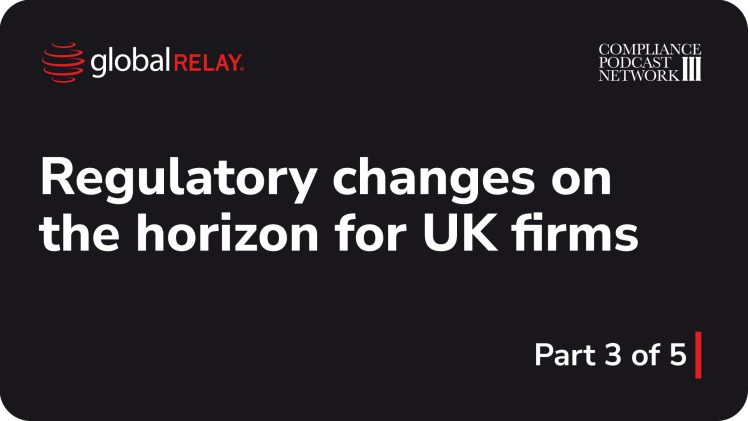
Here’s how the Dodd Frank Act is evolving the financial market
The Dodd Frank Act was a transformative and ground-breaking piece of legislation when it was brought into the United States during 2010. In response to the financial industry’s dire Wall Street crash in 2008, this Act aimed to better protect the Federal Reserve, financial markets and consumers, preventing a repeat of the crisis.
Written by a human
In this piece, you’ll learn why the Dodd Frank Act was introduced, its most important changes and how it’s affected the US financial market in the 14 years since.
Why is the Dodd Frank Act necessary?
The Dodd Frank Act was a direct response to the 2008 global financial crisis. In the US, an investigation showed it was caused by three factors:
- Financial institutions offering high-risk products
- Undisclosed conflicts of interest within the market
- A failure to properly regulate the industry
Leading up to the crisis, regulations had gotten a little lax. It led to very risky lending practices, potential money laundering and many banks not keeping enough in reserves.
In the US’ housing industry in particular, banks were freely approving a large proportion of ‘subprime’ mortgages to those with poor credit. Then, when the so-called ‘housing bubble’ burst (ie. many of the borrowers defaulted on their loans at once), many banks, insurers and financial institutions collapsed.
In the aftermath, Senator Chris Dodd and Congressman Barney Frank put together their 16 ideas for Wall Street reform in one proposed rule, aiming to ensure another crash of this kind could never happen again. This lending act legislation would become known as the Dodd-Frank Act.
What changes came in under the Dodd Frank Act?
There were 16 areas of financial firm reforms under the Dodd Frank Act. Four of the most important reforms focused on:
- Financial stability
- Consumer protections
- The Volcker Rule
- Credit Rating factors
Note: These were not sweeping changes. Rules under the Dodd Frank Act have been slowly implemented over time, with the most recent rule coming into effect in November 2021.
Financial Stability
The Financial Stability Oversight Council (FSOC) was set up under Dodd Frank in order to provide an early warning system for financial risks. In time, the effectiveness of this committee hopes to completely replace the need for government bailouts.
The FSOC monitors financial stability at large firms, where any failure would significantly impact the financial market. Moreover, they force high-risk institutions to hold larger reserves in order to reduce risk, and mitigate instability during restructurings or corrections. This improves operational resilience.
The Orderly Liquidation Authority (OLA) operates under the FSOC, and their responsibility includes breaking up banks that are deemed so big their level of risk is above the threshold. The Federal Insurance Office (FIO) does the same, but for insurance companies.
Consumer Protections
The Consumer Financial Protection Bureau (CFPB) was introduced in order to prevent predatory mortgage lending – the key stressor for most of the public during the 2008 financial crisis.
One of the key perpetrators of the subprime mortgage market was that advisors were given higher fees when their clients accepted more expensive mortgages (both in terms of fees and interest rates). Therefore, part of this rule proposes that advisors must not steer the borrower into a loan that would result in higher commissions, and instead work through the offers based on the financial interest of the borrower.
Another of the consumer protection changes under the Dodd Frank Act was to simplify the terms and conditions of credit products. For example, credit card applications now show much simpler terms of agreement, so that the applicant is well-informed before they accept their credit agreement.
Volcker Rule
The Volcker rule aims to limit risk adversity by preventing banks from using their own funds to make investments like:
- Acquiring or retaining ownership in hedge funds
- Acquiring or retaining ownership in private equity funds
- Other speculative trading practices
Banks had until July 2015 to comply with this rule, and since its introduction, banks have been operating at a lower risk threshold.
However, this rule is one of the most widely-criticized parts of the Dodd-Frank Act. With claims that the costs outweigh the benefits, many became concerned over the potential reduced liquidity caused by Volcker. Plus, compliance with the rule was expensive. Therefore, in 2019 the Volcker rule was loosened.
Credit Ratings
The Office of Credit Ratings (OCR) was introduced under Dodd Frank and aimed to standardize how b2b credit agencies assess institutions. It was officially established in June 2012.
The group that the OCR regulates are known as Nationally Recognized Statistical Ratings Organizations (NRSROs). Current NRSROs include Fitch Ratings, Kroll Bond Rating Agency and S&P Global Ratings.
The Dodd Frank Act also implemented the following rules around credit ratings:
- Annual internal control reports
- Conflict of interest declarations
- Rules for fines and penalties
- Disclosures for methodologies
- Standardized training and testing for analysts
Moreover, Federal Agencies must review their regulatory requirements and ensure that they substitute any reliance on credit ratings with credit worthiness.
Effects of the Dodd Frank Act
Overall, the Dodd-Frank Act has been successful in reducing the overall risk assumed by banks. 29 banks are currently deemed ‘systemically important’, and therefore monitored under the FSOC.
However, the Trump administration severely weakened the rule in an attempt to jumpstart growth.
For example, the administration increased the number of small and local banks exempt from the rules, and reduced stress test requirements from an annual basis, to less frequent. Moreover, the Volcker rule was changed significantly– with banks required to hold less capital reserves and increased opportunity to invest in Venture Capital funds.
“Dodd Frank compliance is costly”
The Trump administration’s biggest criticism of the Dodd Frank Act was that it is too arduous and costly for smaller and local financial institutions to comply with.
But the fines and penalties are so high, that for many banks, it’s a ‘do it right or do it twice’ type of regulation. It’s particularly important to invest in the right technology, compliance managers and internal controls as your company evolves with Dodd Frank compliance.
Global Relay helps enterprise organizations to mitigate risk and access reliable, secure solutions for every step of the compliance journey. We build high-powered data connectors to capture communications in every channel, and meet the strictest record-keeping requirements in the most heavily-regulated industries.
Demo the platform to see why more than 20,000 customers trust Global Relay.



